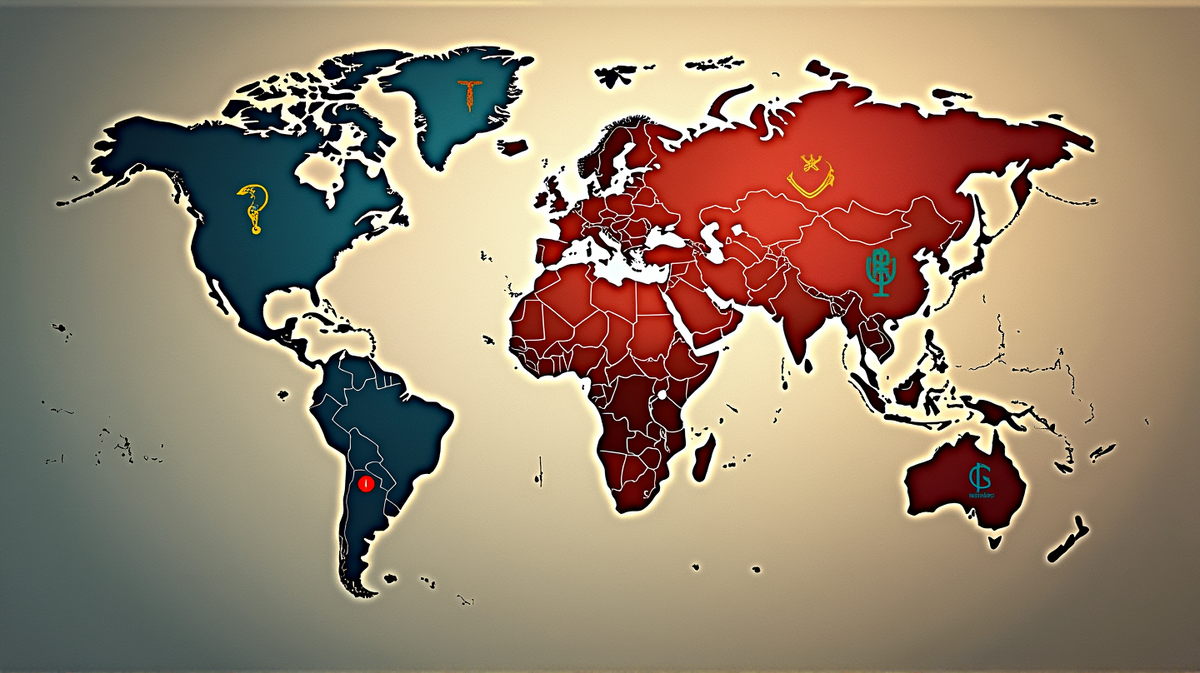Global Turmoil: Risks Loom Over India's Economic Growth

The February economic review by the Union finance ministry casts a somber shadow over India’s financial landscape. At a crucial juncture, as the nation navigates the turbulent waters of global trade and political tensions, its economic forecast hangs delicately in balance. According to Mint, the ministry highlights potential pitfalls lying ahead, emphasizing the impact of escalating global uncertainties on India’s export-driven growth.
The Web of Global Trade Uncertainty
The Global Trade Policy Uncertainty Index has reached an unprecedented high, signaling turbulent times ahead for international trade. India’s exports, particularly sensitive to this index, have felt the sting, with growth slowing to a mere 1.39% as of early 2025. This slowdown stems from tariff disputes and geopolitical tensions, threatening to derail the momentum built in previous years. Despite these shadows, a healthy services trade surplus provides a cushion against the blow.
Challenges Mounting from Across the Pacific
The sweeping tariffs introduced by US President Donald Trump have further clouded the horizon. Such reciprocal tariffs are predicted to adversely affect the majority of India’s exports to the United States. With the impending impact of these policy measures, both nations are engaged in high-stake negotiations to temper the consequences and find a path to a trade concord.
The Glimmers of Hope Amidst the Storm
Despite the looming challenges, India is not without defenses. The February review underscores strong fundamentals, pointing to steady commodity prices and burgeoning private sector investments as potential drivers for recovery. As the world’s eyes are drawn to India’s robust 8.2% growth in FY24, the focus shifts to maintaining momentum in FY25 and beyond.
Behind the Numbers: A Diverse Economic Landscape
In stark contrast to the slowing global economy, domestic forces are gearing up to catalyze growth. Government initiatives target agriculture, MSMEs, and export diversification as key growth engines. These sectors are poised to counteract external headwinds, reinforced by committed fiscal policies and supportive monetary strategies backed by the Reserve Bank of India.
Moreover, a nascent turnaround is perceptible in leading economic indicators, reflecting strength in manufacturing and consumer spending. The PMI Output Index, a harbinger of manufacturing resilience, soared to its highest in nearly a year, marking a positive shift in India’s production landscape.
Echoes of Optimism in Economic Circles
Economists, including Poonam Gupta of NCAER, remain cautiously optimistic. Moderate inflation rates and promising growth metrics hint at a steady recovery, potentially offsetting contemporary global setbacks. With food inflation at new lows and the prospect of interest rate cuts, India finds itself better equipped to shoulder external challenges.
In conclusion, while external risks and uncertainties pose significant threats to India’s growth narrative, strong domestic policies and strategic sectoral initiatives offer beacons of hope. The coming years will demand resilient adaptation to global shifts, ensuring India’s economic storyline remains one of growth, resilience, and innovation.